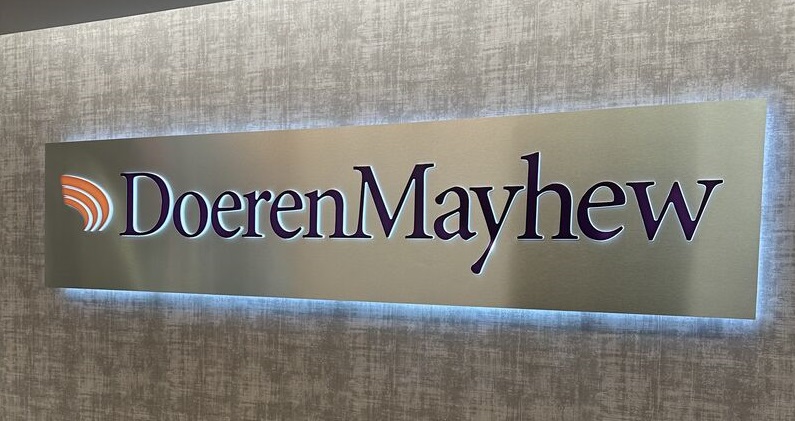From the April 2021 Issue.
When did collaboration become a “must have?” While many milestone releases of products could be shown as the starting line, working simultaneously together on the same file is an attitude. It is different this decade than it was at any time before. While I still despise getting large documents via an email attachment, now I don’t want attachments or links based on the security risk alone. Not to mention the lost work and rework that occurs when people don’t work together! Also, there is a strong connection between collaboration and providing advisory services in a satisfactory way to all parties involved.
So, how can collaboration improve the practice of accounting while enhancing the final work product and deliverable? How can collaboration save time, money, and effort? Do you have a proactive way of working collaboratively? You may do a lot of work on your own. But how do you know those who consume your work don’t have to overcome challenges? Most importantly, how do you work with clients to make their interactions with you as seamless as possible? How do you improve your client and team member experience?
For example, in writing this column, I’m starting the process in Word. Wouldn’t it be easier on the editors if I could write this inside the content management system used for editing, website publication, and press runs? Why should they have to translate this document into various formats using their talents in clerical translation when they could spend more time improving my writing technique and making it easier for you, the reader, to consume this content?
How Do We Collaborate on Information with Clients?
First, let’s look at some milestone productivity technologies and their release dates. Among these is the release of what is now Google Workspace, initially released on March 9, 2006, as Google Docs and Sheets, and updated on August 28, 2006, as Google Apps for Your Domain. Many small businesses use Google Workspace exclusively.
Microsoft had some collaboration in mind with the release of SharePoint on March 28, 2001, but this was released primarily as a document management and storage system. It was not until Office 365 was released on June 28, 2011, as a response to Google’s success with the features of Google Sheets improving and multiple people editing those Sheets, and that the Google Workspace product was starting to become a threat to Excel that Microsoft took this suite seriously. Co-authoring for Excel didn’t arrive until March 2017 with the release of Microsoft Teams.
I can’t imagine developing a work product in Word, Excel, or PowerPoint today where I don’t use co-authoring. Collaboration reached a new peak for Microsoft with the name change from Office 365 to Microsoft 365 as a superset of Enterprise features on July 10, 2017, and consumer and small business rebranding on April 21, 2020. One could argue that even though Adobe Cloud wasn’t released until 2013, prior versions of Adobe had some co-authoring features as early as 2004 with the LiveCycle Designer. Of course, Zoho Corporation is celebrating its 25th anniversary this year. Zoho One contains Zoho Docs, Sheet, and other collaborative productivity competitors that have also been in the market for over ten years too.
But one of the most significant breakthroughs came with Microsoft’s Azure cloud. It took the vision of Bill Gates in 2005 to assign Ray Ozzie (who helped create Groove and Lotus Notes), along with Amitabh Srivastava and Dave Cutler, to invent a cloud operating system for Microsoft. Microsoft Azure was released on February 1, 2010, after being announced in 2008. Our K2 team was one of the first businesses installed on Microsoft’s original email hosting platform called Business Productivity Online Suite (BPOS) in 2008. Today’s Azure cloud and the Groove-like synchronization of data provide the collaborative capability to a whole new generation of products. This low-level data synchronization is more than just the hosting you can get from competitors like Amazon Web Services.
As noted in my March column, collaboration with meeting technologies erupted in 2020 with Microsoft Teams in particular. Teams’ popularity was not an overnight success after the March 2017 release. Still, Microsoft went from 0 to 115 million users in the same time Slack grew to 12.5 million users before being acquired by Salesforce for $27.7 billion on December 1, 2020. Based on the various meeting technologies required to effectively work together from anywhere, including Google Hangouts, Google Meet, GoToMeeting, WebEx, Zoho Meeting, and Zoom, the popularity of collaborative meetings during the pandemic was no surprise. You can learn to manage collaboration culturally among your team in the new book from Bart Barthelemy entitled Collaborative Innovation.
What does it mean to collaborate?
- Share accounting software or financials
- Cooperate on Business Development and CRM to nurture relationships
- Coordinate workflow between team members
- Share documents internally and with clients
- Co-authoring so multiple people can work on data at the same time
- Meet virtually online
- Work any time, any place, any device
- And do all these things with appropriate security
Why all this history? It has been only 10, 15, or 20 years that we have collaborated with productivity tools. However, I was lucky to help start the path of collaboration in Financials, Relationships, and Workflow in the 1980s and 1990s, now between 30 to 40 years ago, depending on the technology.
As I reflected on each tool where I was fortunate enough to help the designers, developers, marketers, and executive management team, we have been building collaboration for a new digital world. While assisting designers of QuickBooks Online, Xero, Zoho Books, Sage Intact, NetSuite, and SAP Business by Design in financials, I promoted the idea of collaboration in financials. It also happened with ACT, Goldmine, and other contact managers before CRM became a focus area with Siebel and the predecessor products of Dynamics CRM and Sage CRM in relationships.
The evolution of products that assisted in the workflow in public practice firms evolved with XCM, FirmFlow, Jetpack Workflow, and others. Each of these products developed in silos, and now they are starting to connect effectively. You’ll see more announcements in 2021 about technical connection improvements.
What Are We Trying to Accomplish Using Collaboration with Clients?
There should be a purpose for collaboration within your team and with your clients. Together, we can do more. I was recently reminded of how we can accomplish things that we can’t do by ourselves with the Mars Perseverance rover landing when a team has a common goal. Consider this relationship
Note that Financials could contain Time and Billing as well as AP and AR. If you consider what a CRM solution can do for your Relationship Management and business success, a system to manage this is key to your success. Business Development is a four-letter word for many firms. Still, there are many excellent CRM products for firms, including FibreCRM, Symphony with Client Sense, and many more. When I perform CPA firm consulting, I’m typically selecting from at least ten different solutions, but rarely do I recommend Salesforce, which does not culturally fit most professional firms.
Business development sounds like a good topic for another day. We have written about and promoted workflow since the 1990s as a critical element for success, and several consultants have delivered Six Sigma training for tax and to optimize processes. Business process management (BPM) and document flow have a relationship illustrated in my March column on portals and document exchange.
Technology products like Liscio, Suralink, Karbon, Canopy, Clarity Practice Management, and SmartVault all aid in the portals, document exchange, and workflow. Rarely is there enough capability in a Practice Management system to handle Financials, Relationships, and Workflow. Additionally, these three areas support our communications, billing, and time management.
Clients were much more patient before the collaborative Digital Revolution because it was apparent to all concerned that delivering the basics of accounting, tax, and audit, took a lot of time and personal expertise, and education. The accounting profession’s uniqueness in compliance simply doesn’t apply as much today, where software can now do most things that were once solely an accountants’ domain. Clients today are tech-savvy and understand much more than they used to about financial management and even tax. It’s a different world!
Let’s further reflect and remind ourselves of the critical ingredients of the business model of accounting firms. These were, or in many cases, still are:
- Primarily a client ‘needs’ driven model – with a provision of services that clients need because they have only one choice: which accountant?
- An efficiency model – people costs against recovered chargeable hours equals profitability
- A traditional services model – tax returns, audit, and accounting services, delivered to the market as compulsory purchases
These three scenarios represent what was traditionally delivered by professional accountants: accounting, tax, and auditing. But the previously listed tasks can be truly advisory or consulting services rather than compliance delivery services. It’s subtle but will become a powerful shift in client perspectives if your firm handles Advisory services correctly. Digital solutions will merely place extra emphasis on these needs and clients’ wants for Advisory positioned services. Unlike the demise of accountants predicted in the past, computer software can’t wholly replace people, and let’s hope they never will.
As most of us know, the business model of accountants for decades was supported by clients’ need for the financial expertise that accountants bring to the table. The key strategic questions for an accounting firm were often:
- “How big do we want to grow, and how many partners do we want?”
- “How hard do we want to work?”
- “How efficient can we be?”
These factors were simple, familiar, reassuring, and reliable and have led to what you could call ‘The Busy Paradigm.’ For many of us, busy meant successful, and when you charged per hour and clients accepted this approach, it worked well, and you don’t see many poor accountants. Billing by the hour and staying busy continued merrily along until outside forces started to intrude, in the form of course, of the Digital Revolution.
Rather than providing accountants with leisure time, this IT revolution seems to have resulted in accountants working harder than ever before and for marginally improved earnings and results. In fact, in terms of a new resilient business model fit for the Digital Age, ‘busy’ could be a four-letter word. A large firm’s very successful managing partner describes “busy” as a gold badge not to be worn as it is a “Fool’s Gold”!
The biggest threats are not future changes driven by technology because they will occur anyway. It’s that while firms are still doing well, accountants will wait too long to strategically plan forward and start to refine their business models to reflect what’s coming in this new collaborative digital world. It’s easy to get left behind when you are doing well and are comfortable with the status quo.
The future strategic change is about going from a traditional services model to a client-focused, effective Advisory model. Of course, efficiency and effectiveness are not the same things. The strategic answer for accountants appears to be a simple two-pronged drive.
- EFFICIENCY – become hyper-efficient with traditional compliance services using technology and Cloud online accounting and tax services.
- GROWTH – effectively grow advisory services.
This two-pronged approach is a reasonable path forward because all the technological benefits have resulted in increased efficiency. Technology changes provide opportunities for increased capacity, but only if we use them properly. Today, Advisory is not a value-ADDED service. It is a CORE service that is vital to the future success of a firm. Did the non-value-added services where we provided clients advice in response to questions provide no value? Of course not! The term ‘value-added services’ is a lazy and misleading way of describing non-compliance with ‘valuable’ services! When you collaborate with clients, the value of your advice increases. As additional benefits, your client retention and realization rise, too.
So, What Can We Do Today?
We must enable collaborative work. While in the past, working together was enabled because of hosting, in the collaborative digital world, this can be accomplished with SaaS applications, running in silos, connected with digital plumbing. The connections have become more reliable, robust, and secure, and more are promised this year.
You’ll see that throughout 2021 and beyond, we’ll discuss client and team member experience because we are too comfortable in our old ways of doing things. Plus, our clients need our help now more than ever. Now is a time of improved collaboration, where we can leverage financials, relationships, and workflow. What type of experience are you going to create for you, your team, and your clients?
Thanks for reading CPA Practice Advisor!
Subscribe Already registered? Log In
Need more information? Read the FAQs
Tags: Benefits, CAS, Firm Management





